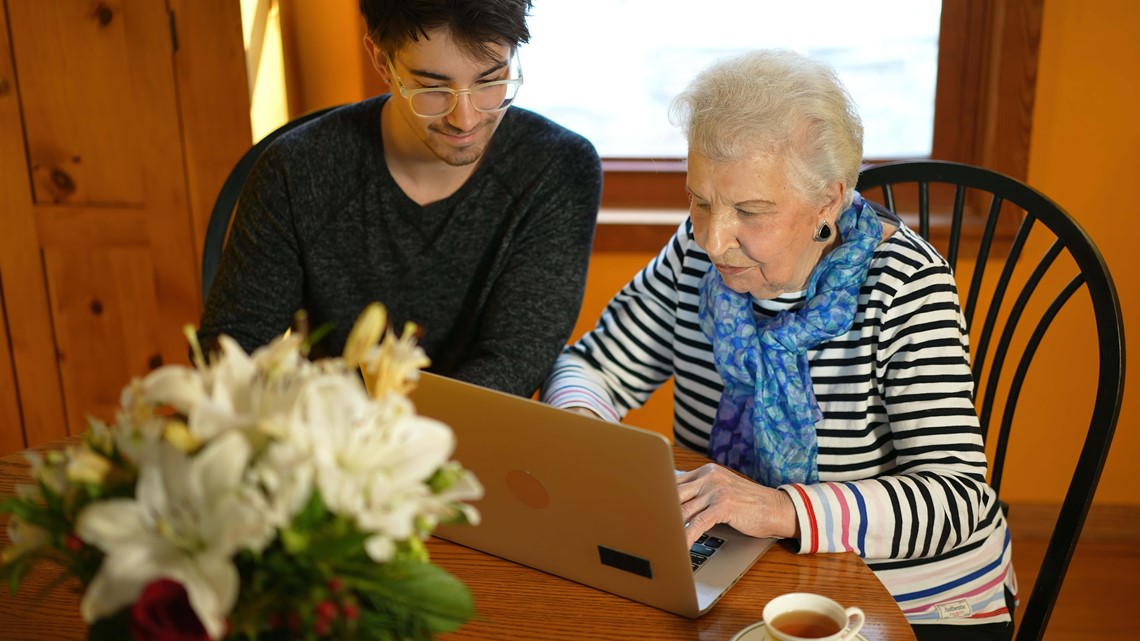City offers resources to help enhance adult literacy and we’re not just talking reading
City offers resources to help enhance adult literacy and we’re not just talking reading KHOU.com


Types of Literacy

There are many types of literacy, including financial and technological literacy.
Literacy Beyond Reading
When many people hear the word literacy, the first thought is usually related to reading. However, literacy goes beyond that.
There are many types of literacy, including financial and technological, and many Houstonians lack those skills.
According to a survey by The International Assessment of Adult Competencies study, one in three adults is challenged with fundamental literacy skills in Harris County. This means one adult out of every three in Houston could be affected by everyday challenges from being safe to getting a job or helping their children.
There are resources available, but because there’s such a great need, many organizations have a waiting list.
“Letting people know that adult literacy is important for our community, that it helps our economy, it helps our families thrive,” said Jackie Aguilera, Mayor’s Office Adult Literacy Project Manager. “So, investment in these nonprofit agencies, investment in adult education.”
The Mayor’s Office for Adult Literacy “focuses on enhancing adult literacy advocacy and awareness and its impact on our economy, communities, families, and individuals,” the website says.
MOAL was founded by Mayor Sylvester Turner on Sept. 17, 2019, and is held in the Julia Ideson Library across the street from Houston City Hall.
To learn more about MOAL and the services it offers, click here or call 832-393-0308.
SDGs, Targets, and Indicators Analysis
1. Which SDGs are addressed or connected to the issues highlighted in the article?
- SDG 4: Quality Education
- SDG 8: Decent Work and Economic Growth
- SDG 10: Reduced Inequalities
The article discusses the issue of adult literacy and its impact on various aspects of individuals’ lives, including safety, employment, and the ability to support their children. This aligns with SDG 4, which aims to ensure inclusive and equitable quality education and promote lifelong learning opportunities for all. It also connects to SDG 8, which focuses on promoting sustained, inclusive, and sustainable economic growth, full and productive employment, and decent work for all. Additionally, the article highlights the inequality in literacy skills among adults in Harris County, indicating a connection to SDG 10, which aims to reduce inequalities within and among countries.
2. What specific targets under those SDGs can be identified based on the article’s content?
- Target 4.6: By 2030, ensure that all youth and a substantial proportion of adults, both men and women, achieve literacy and numeracy.
- Target 8.6: By 2020, substantially reduce the proportion of youth not in employment, education, or training.
- Target 10.3: Ensure equal opportunity and reduce inequalities of outcome, including by eliminating discriminatory laws, policies, and practices and promoting appropriate legislation, policies, and action in this regard.
Based on the article’s content, the specific targets that can be identified are Target 4.6 under SDG 4, which focuses on achieving literacy and numeracy for both youth and adults, and Target 8.6 under SDG 8, which aims to reduce the proportion of youth not in employment, education, or training. Additionally, Target 10.3 under SDG 10, which aims to reduce inequalities of outcome, is relevant as it addresses the need to eliminate discriminatory practices and promote equal opportunities.
3. Are there any indicators mentioned or implied in the article that can be used to measure progress towards the identified targets?
- Indicator 4.6.1: Percentage of adults (15 years and older) with functional literacy skills.
- Indicator 8.6.1: Proportion of youth (aged 15-24 years) not in education, employment, or training.
- Indicator 10.3.1: Proportion of population reporting having personally felt discriminated against or harassed in the previous 12 months on the basis of a ground of discrimination prohibited under international human rights law.
The article does not explicitly mention indicators related to the identified targets. However, based on the content, potential indicators that can be used to measure progress towards the identified targets include Indicator 4.6.1, which measures the percentage of adults with functional literacy skills, Indicator 8.6.1, which measures the proportion of youth not in education, employment, or training, and Indicator 10.3.1, which measures the proportion of the population reporting discrimination or harassment based on prohibited grounds.
4. Table: SDGs, Targets, and Indicators
| SDGs | Targets | Indicators |
|---|---|---|
| SDG 4: Quality Education | Target 4.6: By 2030, ensure that all youth and a substantial proportion of adults, both men and women, achieve literacy and numeracy. | Indicator 4.6.1: Percentage of adults (15 years and older) with functional literacy skills. |
| SDG 8: Decent Work and Economic Growth | Target 8.6: By 2020, substantially reduce the proportion of youth not in employment, education, or training. | Indicator 8.6.1: Proportion of youth (aged 15-24 years) not in education, employment, or training. |
| SDG 10: Reduced Inequalities | Target 10.3: Ensure equal opportunity and reduce inequalities of outcome, including by eliminating discriminatory laws, policies, and practices and promoting appropriate legislation, policies, and action in this regard. | Indicator 10.3.1: Proportion of population reporting having personally felt discriminated against or harassed in the previous 12 months on the basis of a ground of discrimination prohibited under international human rights law. |
Behold! This splendid article springs forth from the wellspring of knowledge, shaped by a wondrous proprietary AI technology that delved into a vast ocean of data, illuminating the path towards the Sustainable Development Goals. Remember that all rights are reserved by SDG Investors LLC, empowering us to champion progress together.
Source: khou.com

Join us, as fellow seekers of change, on a transformative journey at https://sdgtalks.ai/welcome, where you can become a member and actively contribute to shaping a brighter future.







